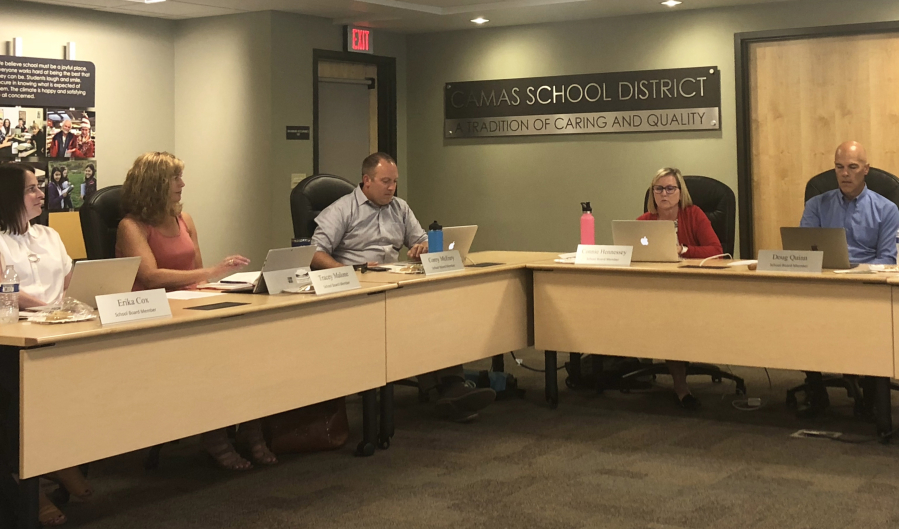The Camas School District Board of Directors have unanimously approved a 2019-20 budget that includes $4.5 million in expense reductions and a $4.15 million deficit to be covered by reserve funds.
The school board voted 5-0 to approve the $147.9 million budget Monday night, after a public hearing that attracted no public comments.
Jasen McEathron, the school district’s director of business services, told board members in June that the district’s general fund forecast showed expenditures overshadowing revenues by $4.1 million.
On Monday, McEathron said district staff had adjusted the proposed budget to include another $400,000 in general fund expenditures, mostly due to corrections related to the district’s career and technical education (CTE) and special education expenses.
“For a $100 million (general fund) budget, adjusting for $400,000 isn’t too bad,” McEathron said.
The $147.9 million 2019-20 budget approved by board members Monday includes a $101.8 million general fund with a $5.1 million in general fund reserves; $23.2 million capital projects fund; $20.5 million debt service fund — the money used to pay off voter-approved debts; a $900,000 transportation vehicle fund for the district’s school buses; and a $1.5 million Associated Student Body fund, which is money belonging to student groups and student governments used to pay for school-related student clubs and events.




